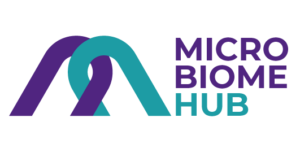MaaT Pharma is preparing to step onto one of hematology’s biggest stages with the kind of data that can bend treatment paradigms. At the 67th American Society of Hematology (ASH) Annual Meeting in Orlando (December 6–9, 2025), the Lyon-based biotech will present pivotal Phase 3 results for Xervyteg® (MaaT013), its lead Microbiome Ecosystem Therapy™ for patients battling steroid-refractory gastrointestinal acute graft-versus-host disease (GI-aGvHD) who are also refractory or intolerant to ruxolitinib. For MaaT Pharma, it’s a milestone layered with meaning: the company’s ninth consecutive ASH appearance, but the first time it takes Phase 3 data to the podium—signaling a transition from clinical promise to the precipice of commercialization.
The ARES study enrolled 66 adult patients across 50 centers in Austria, Belgium, France, Germany, Italy, and Spain—a real-world geography that matters when regulators and payers later weigh generalizability. These were profoundly sick individuals: 91% had severe disease at baseline, with more than half classified as grade III and a third as grade IV. All had failed on ruxolitinib and were either resistant or dependent on steroids, leaving clinicians with few options and patients with dwindling odds.
Against that backdrop, the topline story is unusually clear. The trial met its primary endpoint, delivering a Day-28 gastrointestinal overall response rate (GI-ORR) of 62% (41/66), driven largely by complete responses and very good partial responses. That early efficacy signal—originally disclosed in January—now comes with a richer portrait. Responses proved durable: GI-ORR was maintained in 49% of evaluable patients at Day 56 and in 44% at three months, with an average response duration of 6.4 months. Importantly for a condition where mortality looms, survival curves separated decisively. The estimated 12-month overall survival for the full cohort was 54% at a median follow-up of 140.5 days, but patients who achieved a GI response at Day 28 had a markedly higher estimated one-year survival than non-responders (67% versus 28%), a difference the company reports as statistically significant. In responders, median overall survival had not been reached; in non-responders, it was just 54 days.
Taken together, the data point to a therapy with both speed and stamina—an early response that can be maintained over time and that appears to translate into a survival advantage. In a single-arm design like ARES, the survival correlation is particularly telling. While cross-trial comparisons are fraught, the magnitude of the Day-28 response and the durability metrics will inevitably become anchors in conversations with hematologists weighing third-line choices, and with health-technology assessors evaluating value in the face of limited alternatives.
Safety, often the Achilles’ heel of therapies in fragile post-transplant populations, features favorably in the company’s summary. While full safety tables will be reserved for the ASH podium and a subsequent publication, MaaT Pharma’s framing—“strong efficacy and a favorable safety profile”—is consistent with the company’s platform thesis that restoring a balanced microbiome can modulate immune responses without compounding toxicity. For clinicians who have watched gut GvHD spiral despite best efforts, the proposition of clinically meaningful benefit that does not exact an unmanageable safety toll is compelling.
The business implications are equally clear. Xervyteg® is under active review by the European Medicines Agency following a June 2025 MAA submission, with a decision anticipated in the second half of 2026. Should EMA grant approval, Xervyteg® could become the first approved third-line treatment specifically for patients with GI-aGvHD who have failed steroids and ruxolitinib—an important label distinction that would define its early market and guide uptake patterns. The European footprint of the ARES sites is strategically helpful; post-approval, those centers can serve as early adoption hubs and training grounds for standardized administration pathways.
For MaaT Pharma itself, these results validate more than a single asset. They reinforce the broader premise of Microbiome Ecosystem Therapies™—consortia designed to reconstitute gut microbiota in a way that meaningfully shapes immune function. Over nearly a decade of ASH visibility, the company has steadily expanded its hematology-oncology narrative; now, with Phase 3 evidence in hand, it can engage regulators, payers, and transplant centers from a position of strength. The timing also aligns with a market that is increasingly attuned to the microbiome’s role in transplant outcomes and immunotherapy responses, yet still hungry for rigorously generated, late-stage data.
Execution will matter from here. Between the ASH presentation and the EMA opinion expected in 2H 2026, MaaT Pharma will need to convert clinical momentum into operational readiness: manufacturing scale for a living-ecosystem product, a distribution model that respects the time-sensitive needs of transplant units, medical-affairs programs capable of stewarding onboarding across 50-plus European centers and beyond, and health-economics dossiers that translate response durability and survival separation into cost-effectiveness arguments. The survival delta between responders and non-responders, if sustained as datasets mature—including the planned one-year OS readout by the end of 2025—could become the linchpin of those value narratives.
Clinically, the ASH audience will probe nuances: response kinetics by baseline severity, organ involvement beyond the gut, steroid-resistant versus steroid-dependent subgroups, concomitant medications, infectious complications, and any signal that helps triage which patients might benefit most and how soon after ruxolitinib failure to intervene. If Xervyteg® can consistently convert early responses into longer-term survival gains without exacerbating infection risk, it will carve out a distinct role in treatment algorithms that have long relied on improvisation once first and second lines fail.
There is also a symbolic current running beneath the numbers. For years, microbiome therapeutics have oscillated between hype and skepticism, buoyed by elegant biology but slowed by translational hurdles. ARES suggests the field is now stepping across that threshold in one of medicine’s most unforgiving arenas. Should regulators agree and transplant teams adopt, Xervyteg® would not only address a dire clinical need; it would also mark a watershed for ecosystem-level therapies in oncology and immunology.
MaaT Pharma arrives at ASH with data that read like a turning point—credible, durable efficacy in a population with few options, safety that appears manageable, and a regulatory path that could culminate in Europe within the next year after decision. For patients facing GI-aGvHD after transplant, the promise is concrete: a potential third-line therapy where there has long been a gap. For the company and the broader microbiome sector, the message is larger still: late-stage, practice-changing microbiotherapy is no longer theoretical. It’s ready for the main stage.












